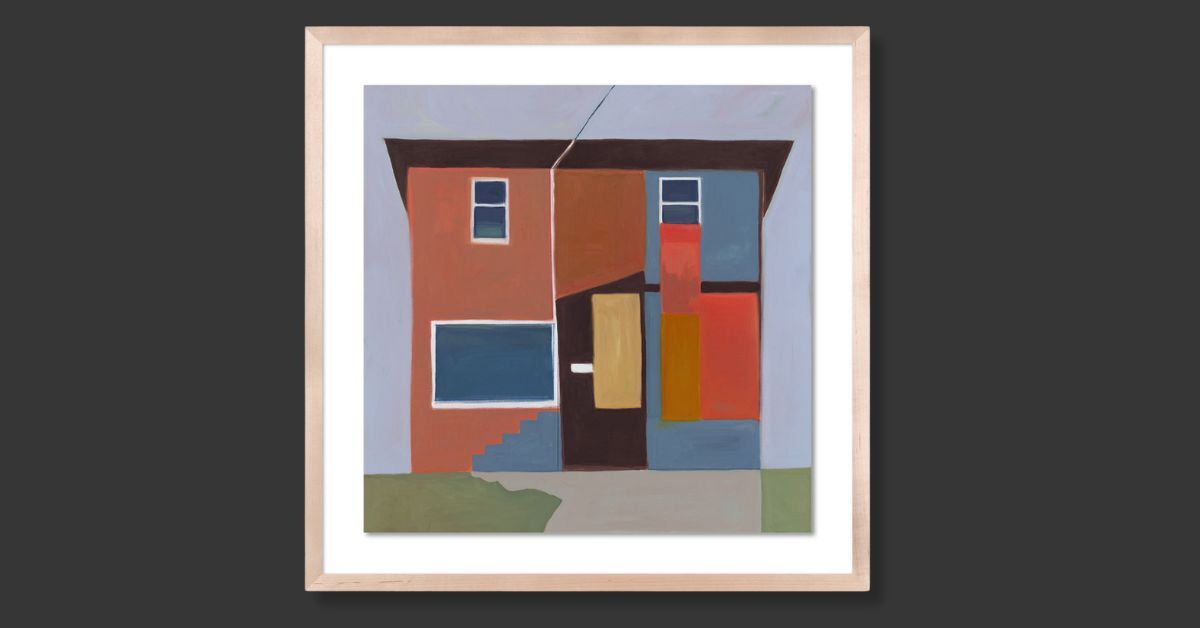Art evolves over time, and we use a wide range of phrases and terms to try to categorize it in all its forms. While certain terms may sound similar, they have entirely different histories and utilizations in the art community. A common example is modern and contemporary art, which may seem interchangeable to those new to the subject.
However, there are distinct inspirations behind each art form, and knowing the differences between modern and contemporary art can help you gain a better understanding of these subjects. Wonderwall Studio is here to explore the origins, characteristics, and influences of these styles to raise awareness of the nuances that distinguish them.
The Origins of Modern Art
The idea of modern art stems from a period of societal and cultural upheaval. This period lasted roughly from the 1860s to the 1970s. As the world went through a period of industrialization, urbanization, and major political shifts, art evolved to grow alongside it. Modern art aimed to break through many of the academic constrictions and limitations of what people considered rules regarding art.
Among the most important pioneers of modern art are Claude Monet and Paul Cézanne, who defied the conventions of their time. They had innovative approaches to color and composition, which laid a foundation for later artistic movements like Cubism, Surrealism, and Fauvism. Many of the big names in modern art had a desire to experiment and wanted to express the essence of the modern world to audiences through their experiences.

The Defining Characteristics of Modern Art
A common idea behind modern art is that it emphasizes emotion and individual perspectives rather than focusing on capturing a realistic depiction of people or landscapes. It helped move away from traditions of representational art. Modern artists frequently took advantage of abstraction, bold colors, and simplified shapes to create meaning and express an idea.
Many historic events served as inspirations for this art movement, like industrialization and the complexities of modern life through urban development and advancements in human psychology. For example, Pablo Picasso’s groundbreaking work in Cubism reimagined the world through fragmented perspectives, challenging viewers to see beyond familiar forms.
The Turning Point From Modern to Contemporary
While many people still associate the word “modern” with current art, the movement saw a dramatic shift in the 1970s. Postmodernism emerged in reaction to modern art, but it was around this period that contemporary art began to take shape.
It’s difficult to pinpoint the exact moment this transition started, but the contemporary movement stemmed from gradual changes in societal, political, and environmental issues. This shift also heralded a time when art became more participatory and interdisciplinary, incorporating elements of performance, technology, and new media.
What Makes Contemporary Art Distinct?
Contemporary art often refers to pieces created by artists from the late 20th century onward. These pieces focus on the complexities of current living and address major topics like identity, technology, and industrialization. This type of art defies expectations and embraces multiplicity and breaking free of formal mores. Many contemporary artists explore ideas or mediums that divert from expectations, including digital art, video installations, and virtual reality experiences.
The Role of Technology in Contemporary Art
As technology continues to evolve, contemporary artists find ways to express new ideas and mirror the ever-changing world. Digital tools, social media, and online platforms allow artists to reach global audiences and try new things with these growing forms of expression. Modern galleries can incorporate augmented reality and interactive live-stream performance pieces to entice audiences on a wider scale.
Video art was once a niche medium but is far more common in contemporary galleries. Since the contemporary movement is ongoing, we see it shift right in front of us to reflect the cultural changes happening all around us through rapid technological processes.
Social Commentary Approaches in Contemporary Art
Contemporary art consistently addresses critical social issues, offering a platform for marginalized voices and challenging dominant narratives. Artists can explore important issues like race, gender, and identity, turning them into focal points of their work to push boundaries and invite dialogue.
The Divergence in Style and Medium
When looking at the differences between modern and contemporary art, examining their stylistic disparities is a compelling subject. While modern art often focuses on abstract themes, contemporary art aims to highlight the realities of our current lives. Both offer bold statements or critiques of societal norms, and artists use their work to showcase how humanity moves through the ever-changing world.
Many modern pieces have a sense of optimism and positivity, celebrating the achievements and innovations of humankind. Contemporary pieces aim to challenge the viewer’s preconceptions and often reveal or highlight a sense of irony in a more thought-provoking way. We’ve seen mediums expand beyond the canvas, allowing contemporary artists to use everything from found objects to digital simulations when creating their artistic narratives.

Museum and Market Dynamics
Modern and contemporary art often reside in different spaces within the art world. Modern art dominates many established galleries and institutions, displaying works from world-renowned artists like Henri Matisse, Wassily Kandinsky, and Salvador Dalí. These institutions frequently emphasize the historical significance of modern art movements in shaping artistic innovation.
On the other hand, contemporary art thrives within dynamic and experimental museum spaces and biennales. Such venues often promote immersive experiences and introduce up-and-coming artists to wider audiences. There are even differences in how the art world views the two art forms from a financial standpoint. Modern work has an intrinsic value from a historical legacy, while many view contemporary art as an investment by contemplating its future potential.
Why Understanding These Differences Matters
While the differences between contemporary and modern art may not seem important to people outside the art community, understanding these distinctions is what allows us to appreciate the innovation, history, and beauty behind each piece. Historical context gives us fresh eyes to examine differences in technique and how these movements shaped and continue to shape the cultural landscape.
Wonderwall Studio has a wide range of architecture framed prints that emphasize ideas and concepts from the modern and contemporary eras. Explore our collection today to transform your walls into a celebration of art and sophistication.



